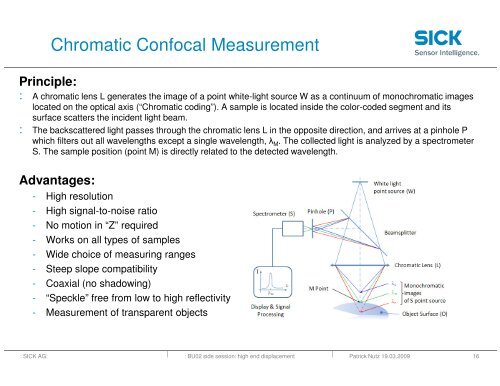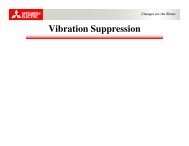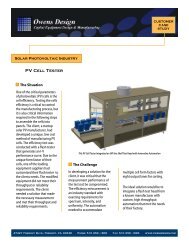Optical Glass Metrology â Techniques / Limitations - Owens Design
Optical Glass Metrology â Techniques / Limitations - Owens Design
Optical Glass Metrology â Techniques / Limitations - Owens Design
Create successful ePaper yourself
Turn your PDF publications into a flip-book with our unique Google optimized e-Paper software.
Chromatic Confocal Measurement<br />
Principle:<br />
: A chromatic lens L generates the image of a point white-light source W as a continuum of monochromatic images<br />
located on the optical axis (“Chromatic coding”). A sample is located inside the color-coded segment and its<br />
surface scatters the incident light beam.<br />
: The backscattered light passes through the chromatic lens L in the opposite direction, and arrives at a pinhole P<br />
which filters out all wavelengths except a single wavelength, M . The collected light is analyzed by a spectrometer<br />
S. The sample position (point M) is directly related to the detected wavelength.<br />
Advantages:<br />
- High resolution<br />
- High signal-to-noise ratio<br />
- No motion in “Z” required<br />
- Works on all types of samples<br />
- Wide choice of measuring ranges<br />
- Steep slope compatibility<br />
- Coaxial (no shadowing)<br />
- “Speckle” free from low to high reflectivity<br />
- Measurement of transparent objects<br />
: SICK AG: : BU02 side session: high end displacement<br />
Patrick Nutz 19.03.2009 16















